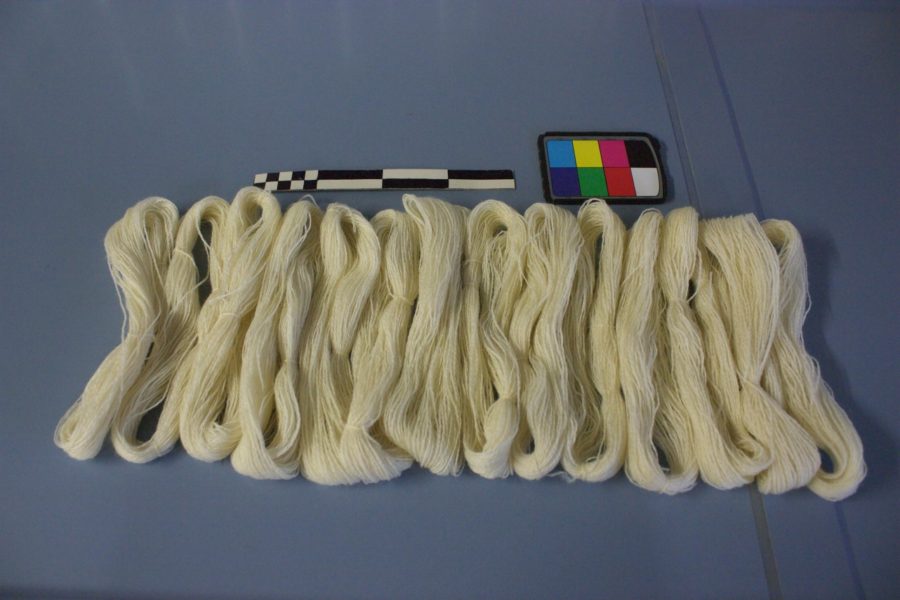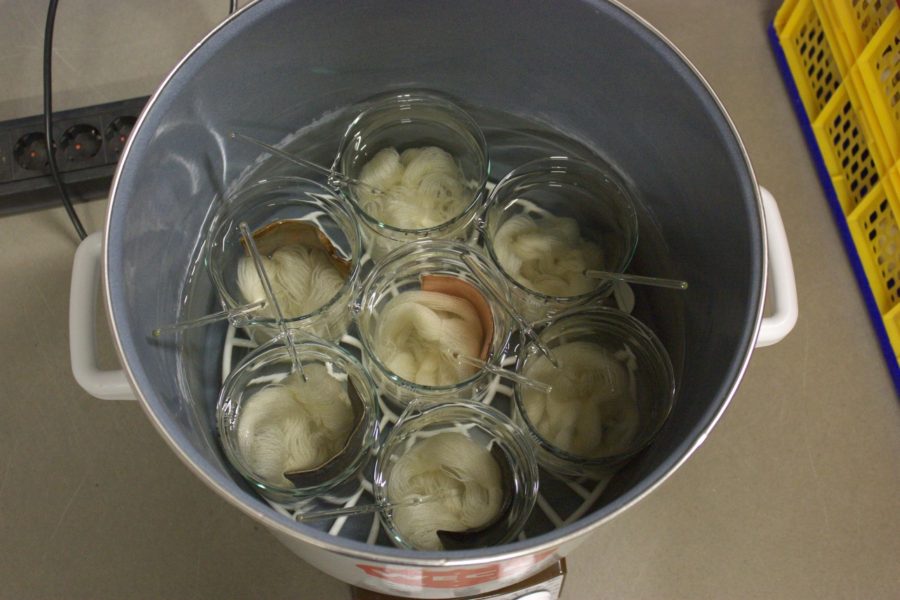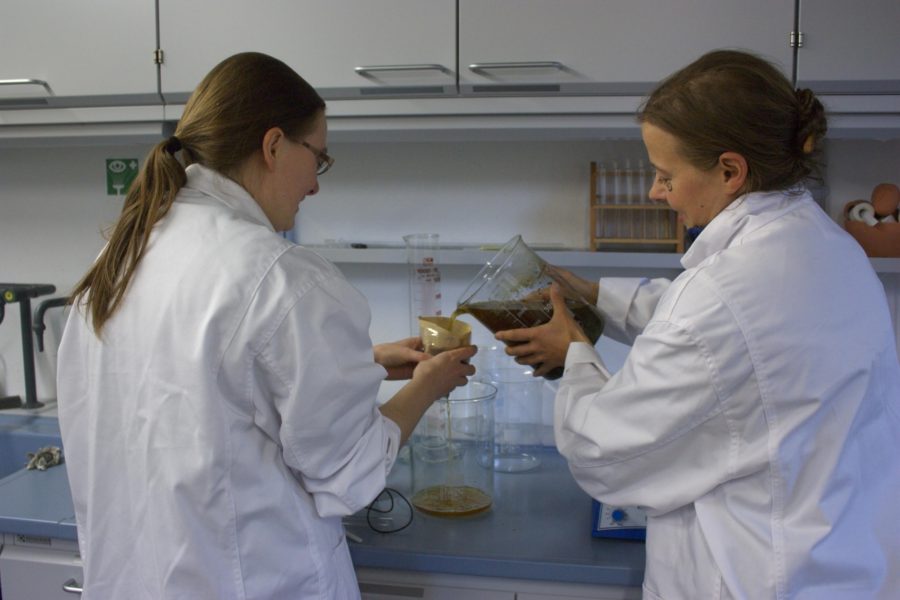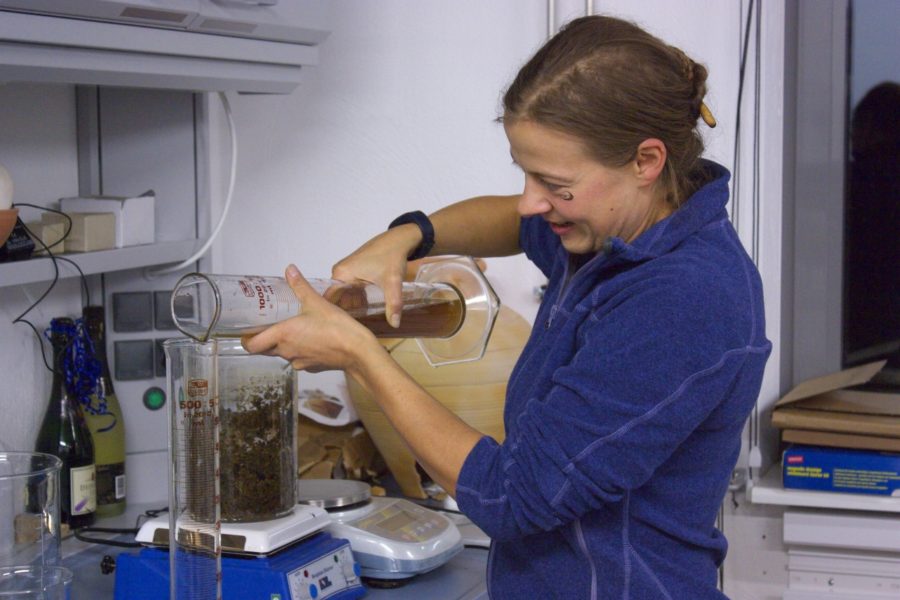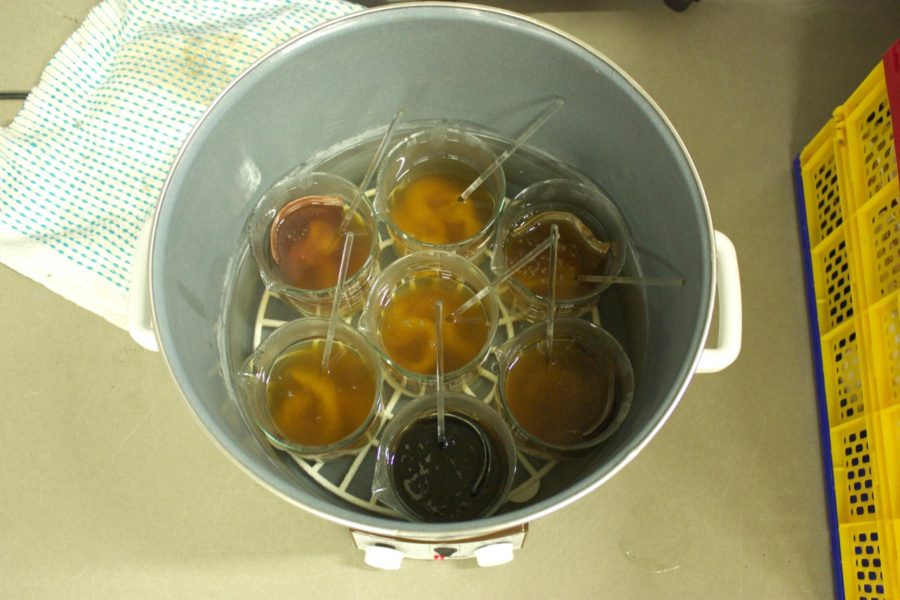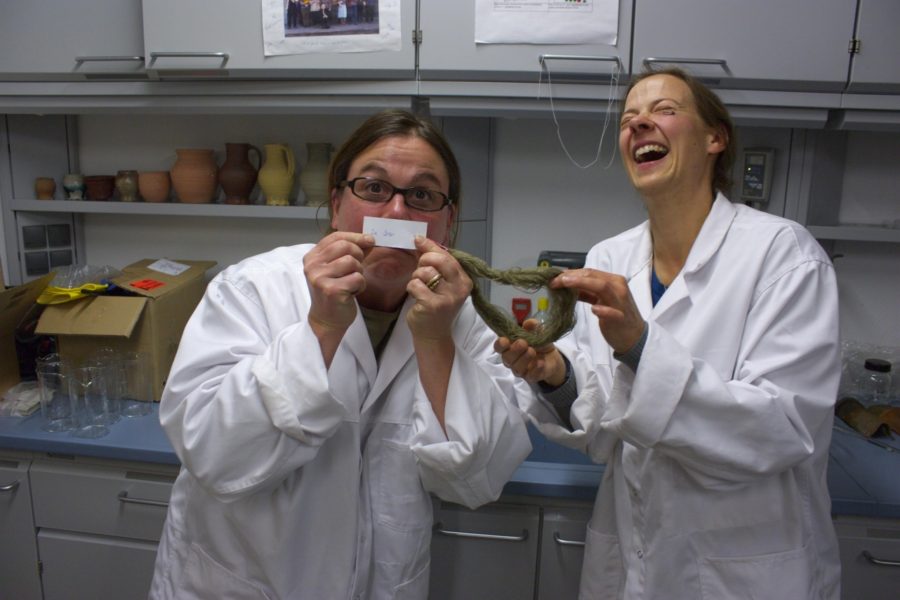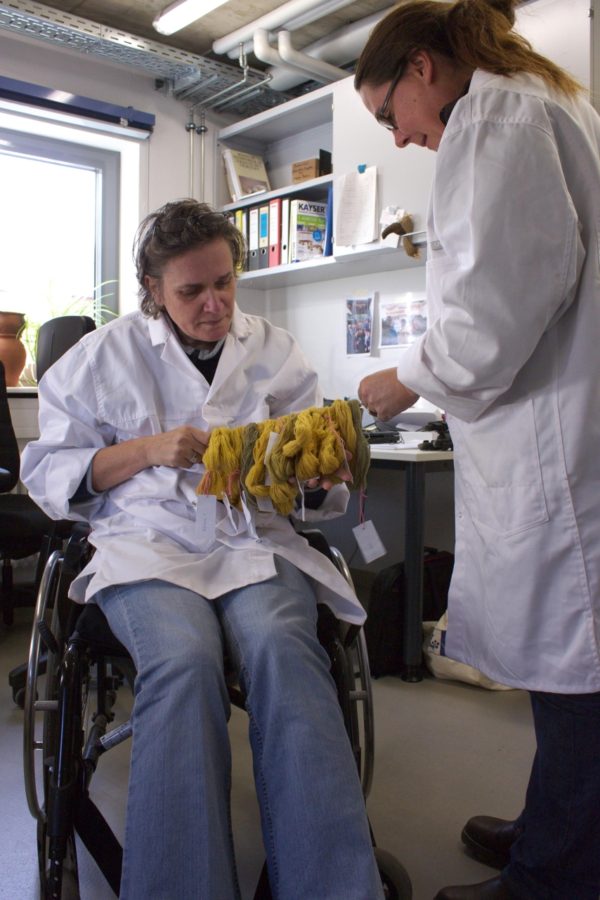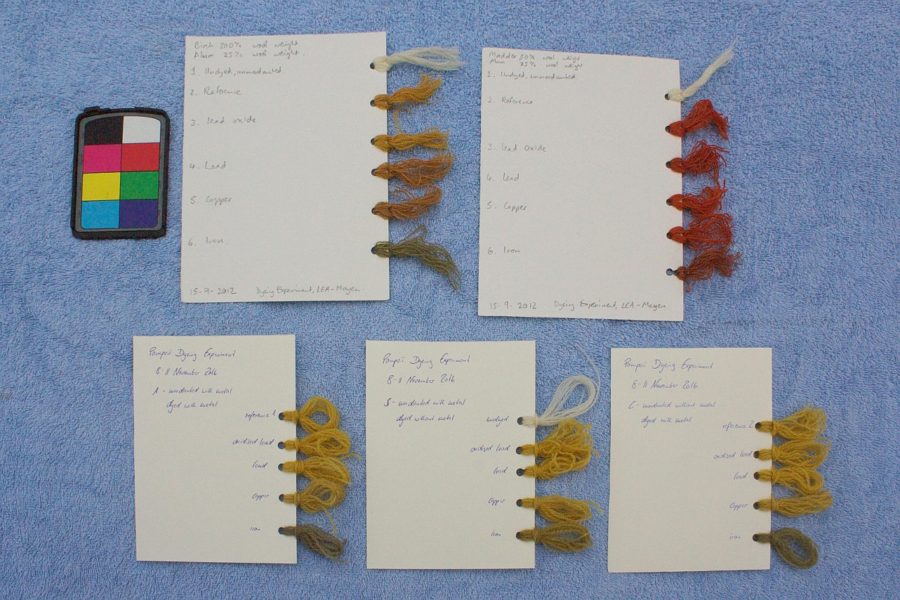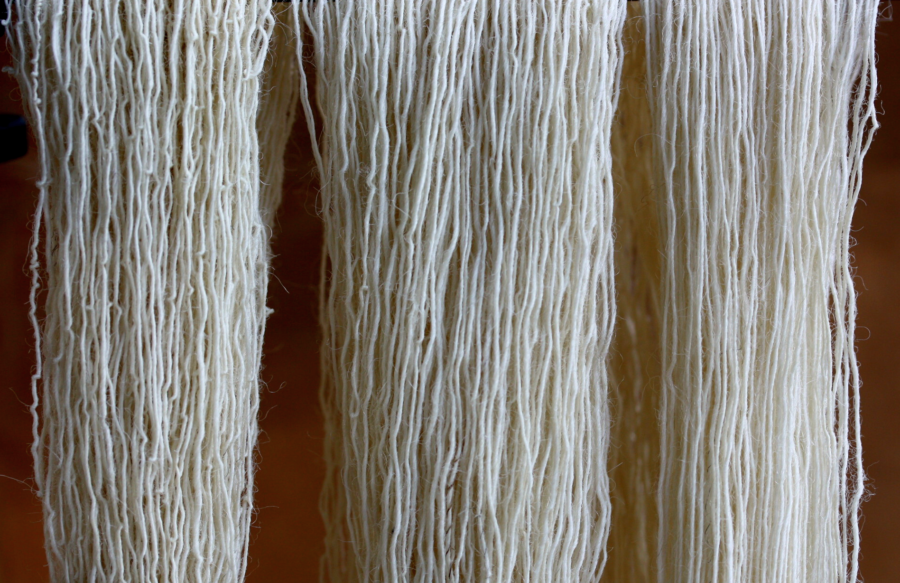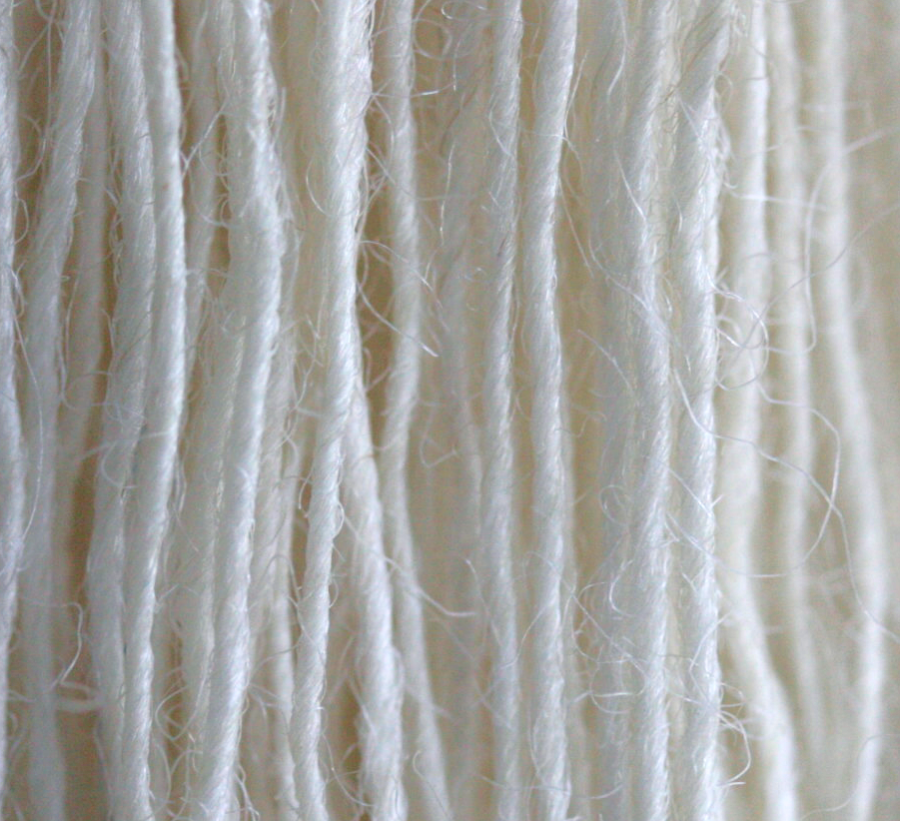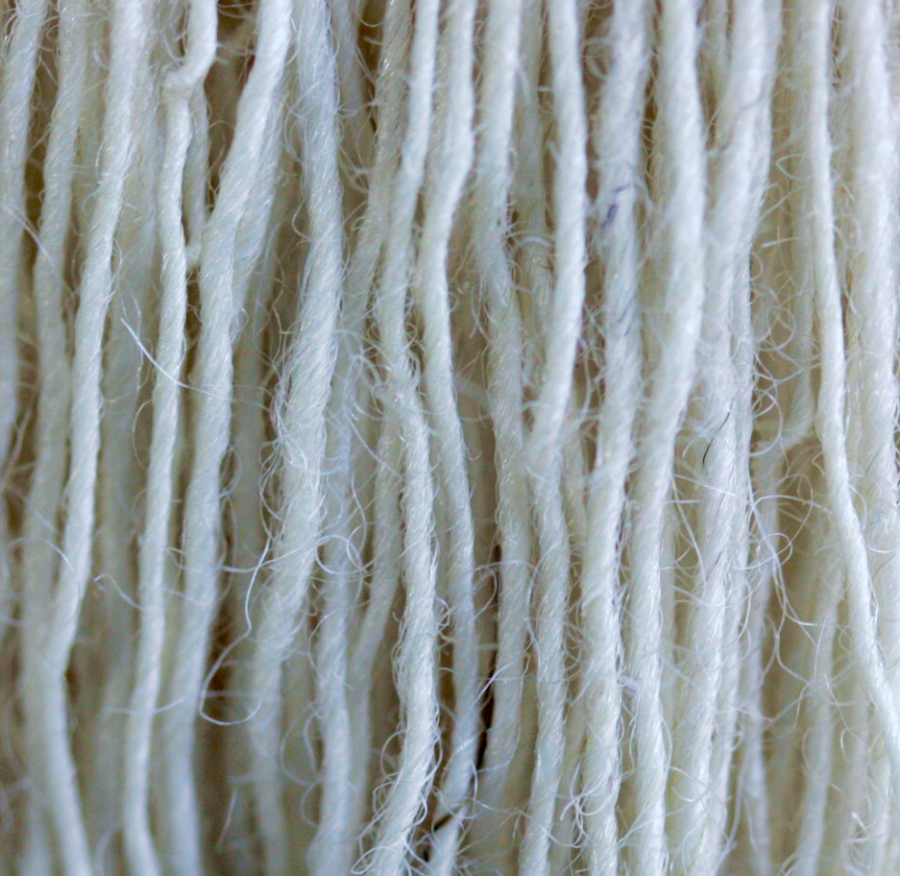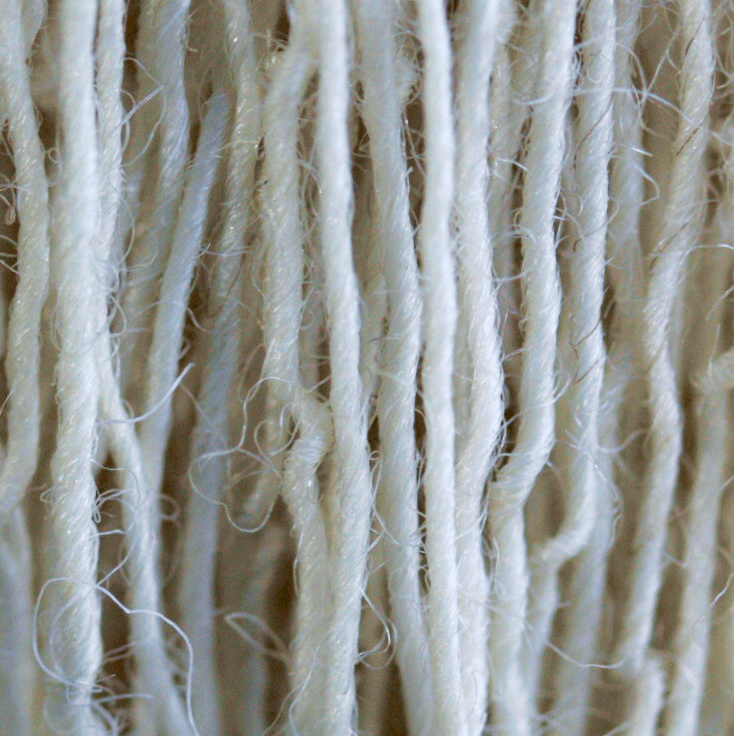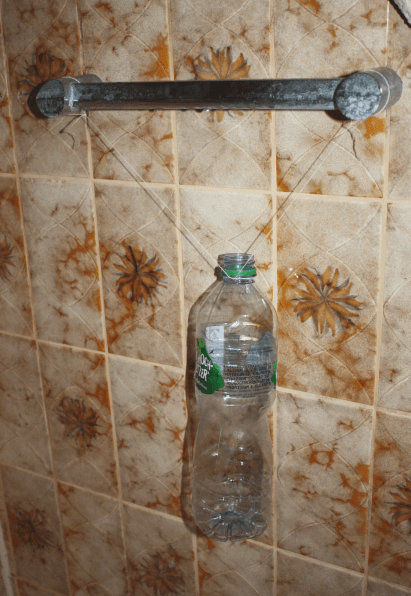I'm back home!
It was a wonderful time away - both the Nobilitas-Akademie and the Textile Forum were amazing experiences, and I had a blast at both. I'm equally happy to be home again now, though, and ease myself back into the familiar routines in my familiar surroundings. A full week of intense work (which the Forum always turns out to be) really does make a person tired!
It was well worth getting tired over, though. This year's Forum was very, very heavy on experiments, with two full-fledged ones and two additional runs of tests, all of them involving dyeing. Which means we had a lot of work being done for those experiments, by a good number of people... and I learned again that experiments take an insane amount of time. Every time.
One of the experiments was dubbed "Dye Penetration Experiment", and it is exactly that which we were testing.
Dyeing can be done either in the fibre (in the fleece), in the yarn (in the skein) or in the cloth (in the piece). All three have their advantages and disadvantages, and there is evidence pointing towards all three methods having been used in historical times (though there is not always evidence for all three at a similar time in one region).
This has led to quite a bit of debate on which method was the most common one - and it is very hard to tell without knowing how well a method can be seen on the textile. If there are white spots between threads in a fabric, it must have been piece-dyed. If there are white cores in yarn, it must have been dyed in the skein. But what if the dye can penetrate completely? Then it would be impossible to tell whether the textile was dyed in the fleece, in the skein or in the piece.
Which leads to the question at the core of our experiment: How easily does dye penetrate the fabric?
We had two possible influences on the permeability of the fabric - yarn twist (yarns with higher twist are denser) and fabric density. Which resulted in the setup of having three different yarns hand-spun, to about 0.5 mm thickness and with three different twist angles (c. 20°, c. 30° and c. 45°), and three different fabric densities (12, 10 and 8 ends/cm in the warp).
The spinning was finished before the Forum, but there was a lot of weaving being done during it, by Harma Piening and Ruth MacGregor:
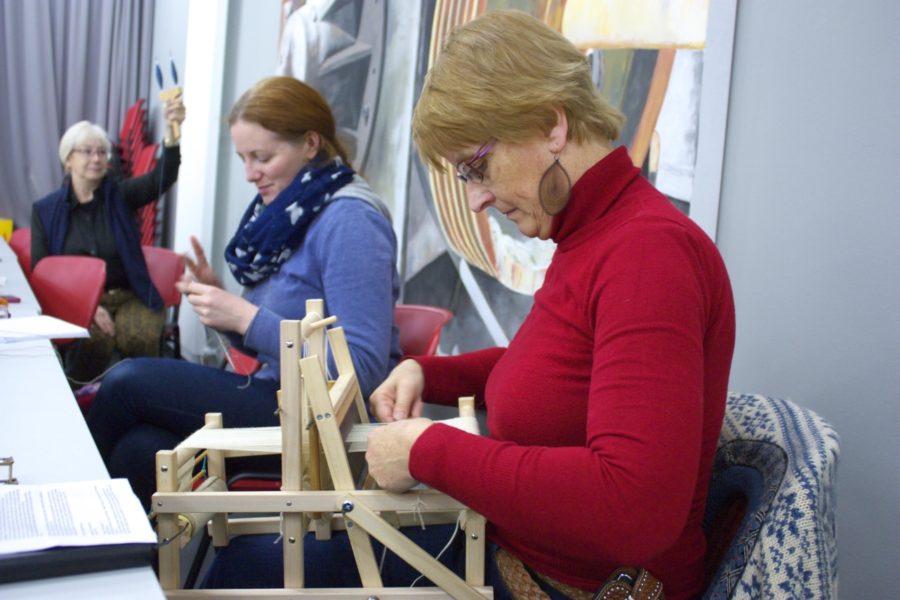
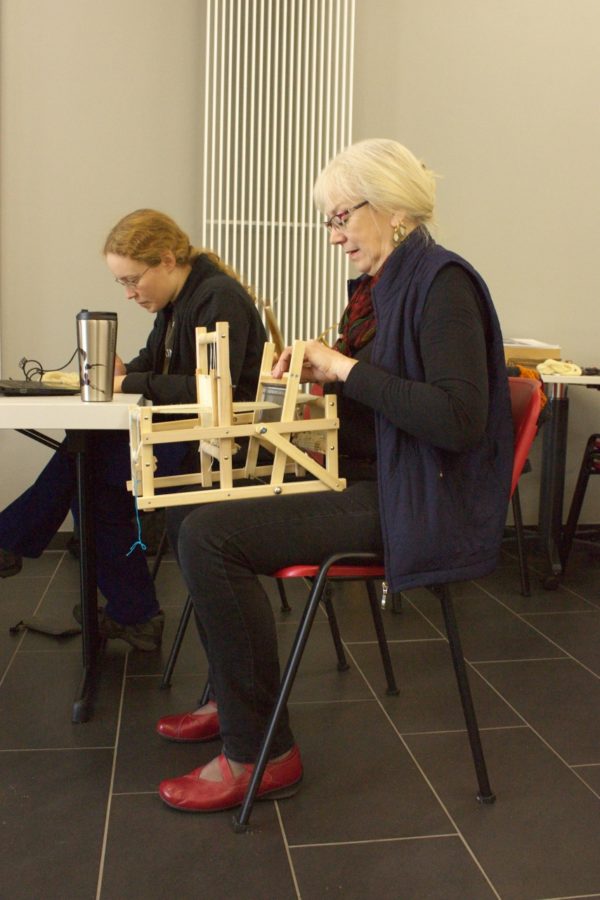
... followed by careful finishing of the fabrics. Then I got to cut them apart:
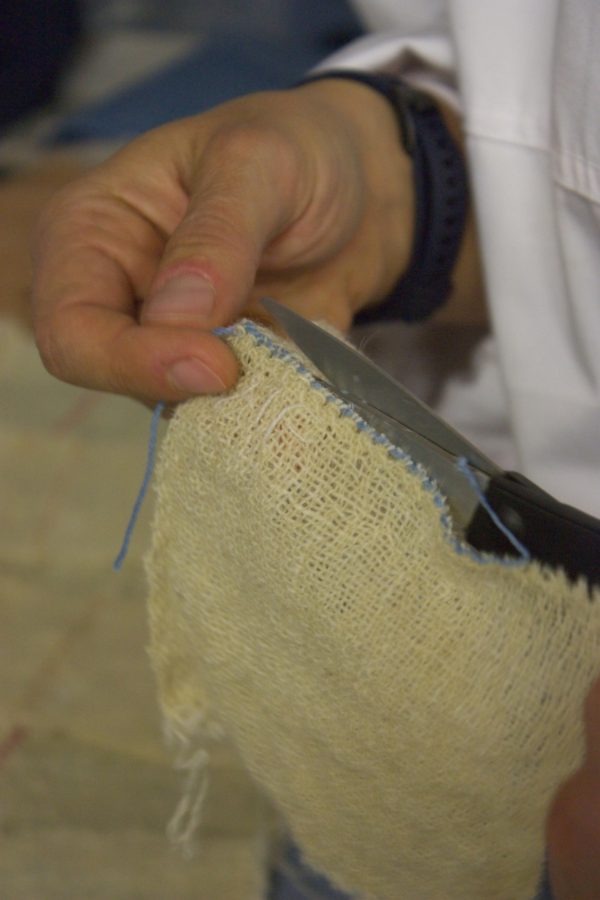
... and then some of them were fulled, and most of them were dyed madder red.
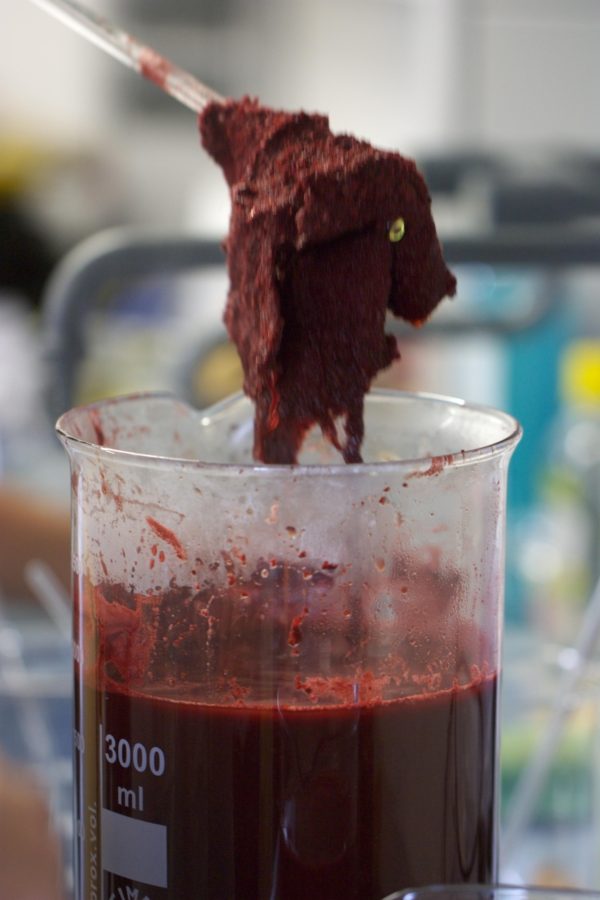
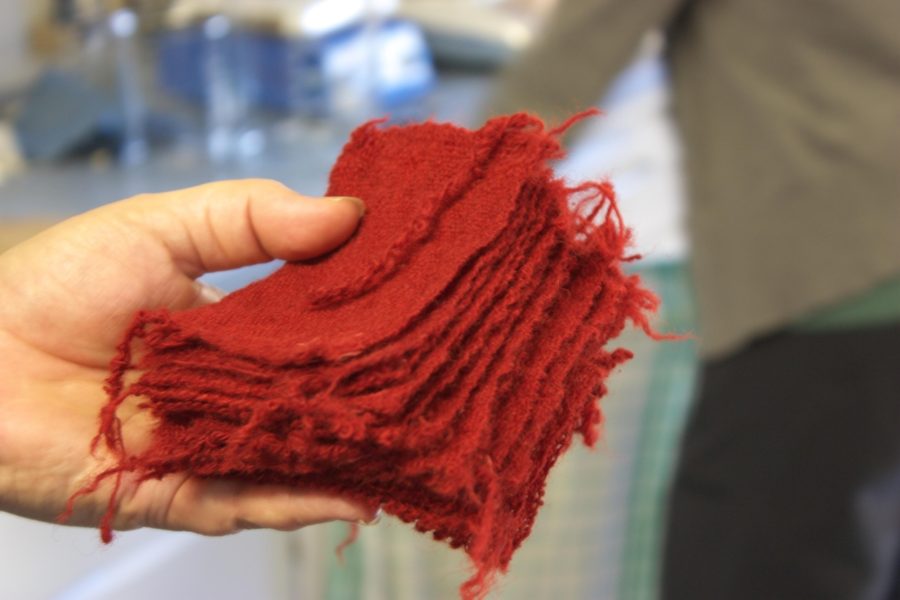
This meant that I got a bonus lesson in how to dye with madder from Sabine Ringenberg - and her speciality from many years of working as a professional historical dyer is red. Small wonder the colour turned out quite nicely!
In the end, we had a load of samples to be catalogued and analysed:
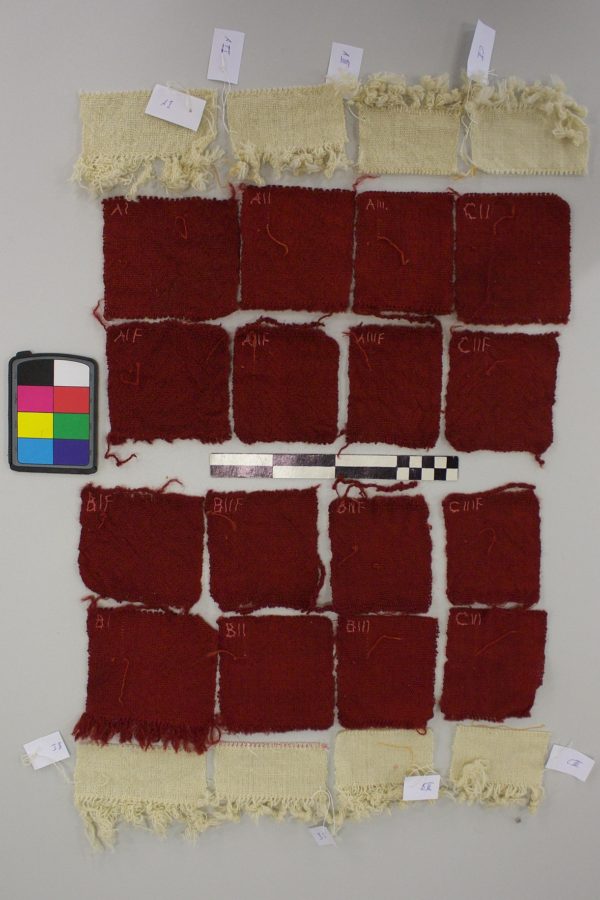
I'll have to take a careful look at the photos, microscope photos and measurements before giving a real conclusion - but I can tell you at this point already that none of the fabrics was completely dyed through, there were white spots between the threads in all of them.
We also found that the twist angle I was aiming for (with regular checks on my spinner's little helper) was not what the yarn ended up having, and that the angle fluctuated a lot over the length of the yarn. It will be interesting to see whether the angles read out differently in the yarn and in the fabric - one of the things on my list to test in the future.
It was definitely a really interesting experiment to do, and I got a good number of surprises (I'd have suspected at least the looser fabric with the soft-spun yarns to dye through, and my spinning to be a lot more regular than what it turned out to be). It is of course not the ultimate answer to the question whether things were dyed in the skein or in the piece - but it does hint that we might expect white spots when dyed in the piece, and that would be a good thing to know. (As all experiments, this has already generated more ideas, such as making tests with yarn skeins with different twists and thicknesses to see about how well it dyes through...)




